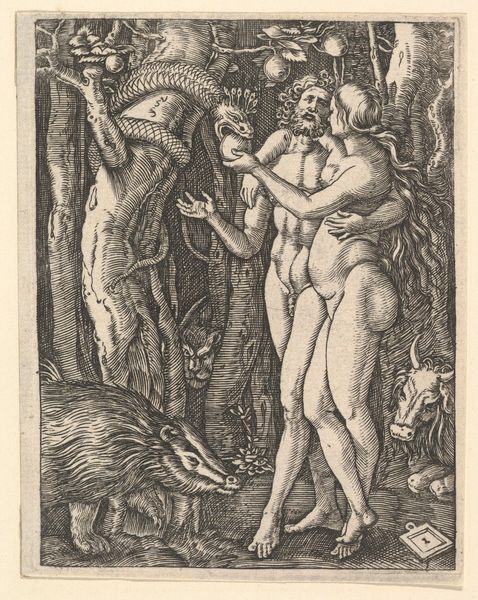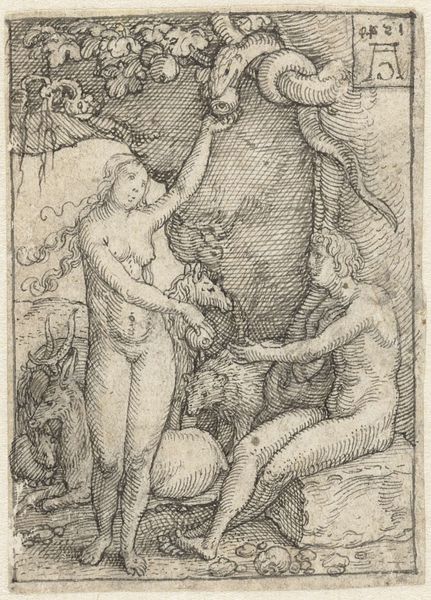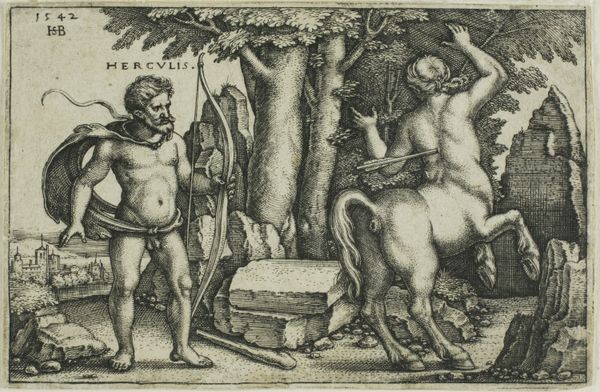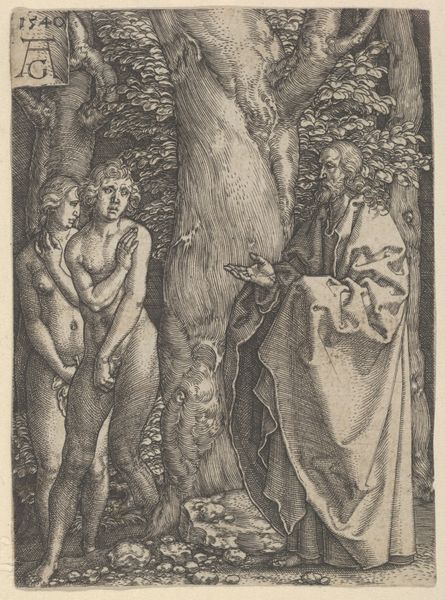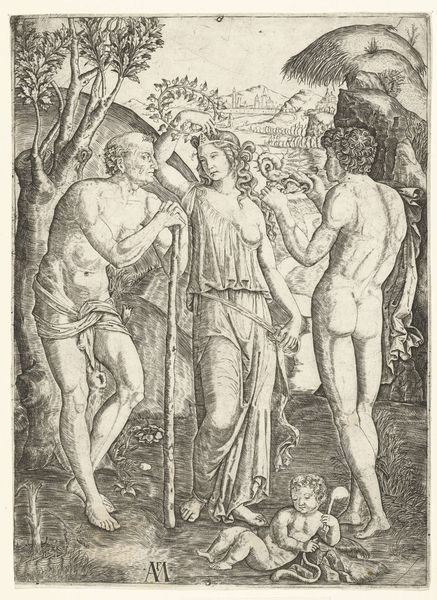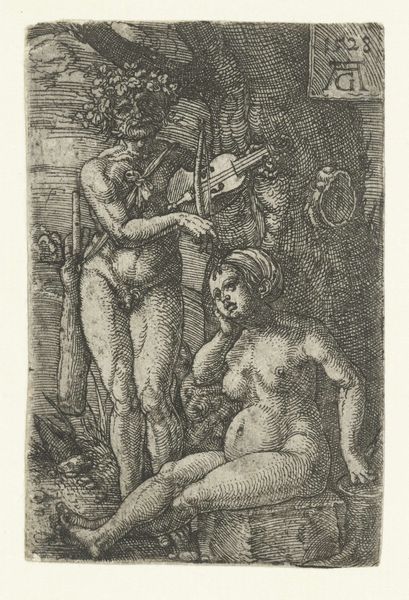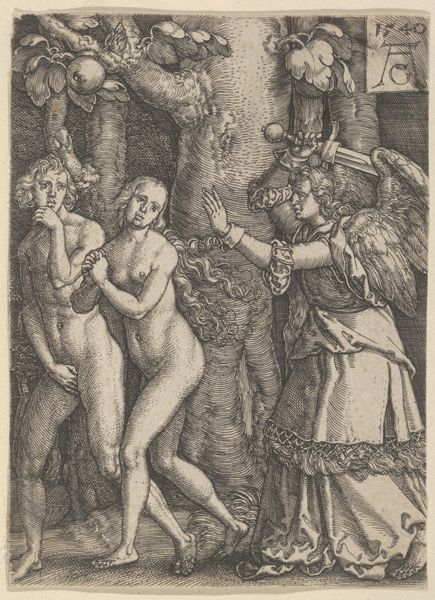
Dimensions: height 128 mm, width 96 mm
Copyright: Rijks Museum: Open Domain
Albrecht Dürer etched "Zondeval" on a small copper plate, capturing a pivotal moment steeped in symbolism. Here, Adam and Eve stand in the garden, the serpent coiled around the Tree of Knowledge, offering the fateful apple. Consider the serpent, a motif slithering through time. In ancient Near Eastern art, serpents often embody chaos and primordial power. Yet, Dürer’s serpent, with its knowing gaze, evolves into a symbol of temptation and forbidden knowledge. This transformation reflects a broader cultural shift, where primal forces are reinterpreted through a moral lens. The forbidden fruit is not just an object; it is a vessel carrying the weight of human desire and the consequences of disobedience. From classical myths to medieval allegories, fruit often represents temptation and earthly pleasures. The act of partaking is a psychological gateway, unlocking subconscious desires and altering the course of human destiny. The tale of the Fall, with its potent symbols, continues to resonate, a testament to the enduring power of images and the cyclical nature of human experience.
Comments
No comments
Be the first to comment and join the conversation on the ultimate creative platform.

